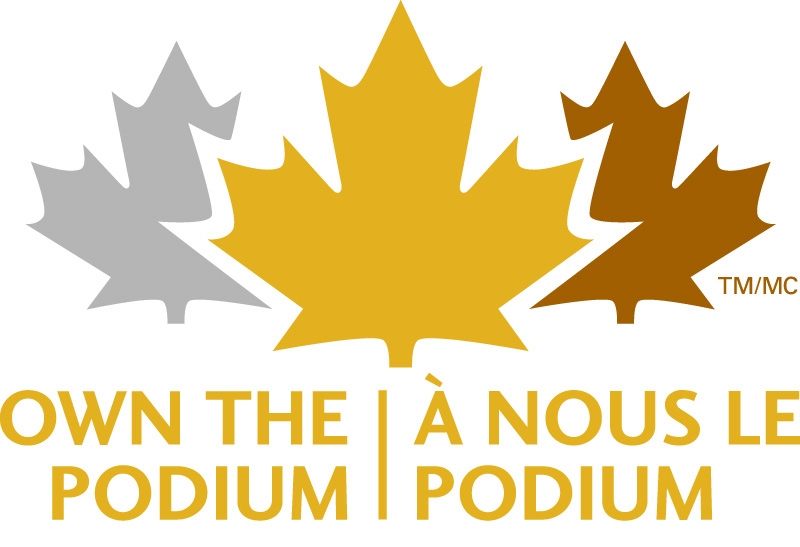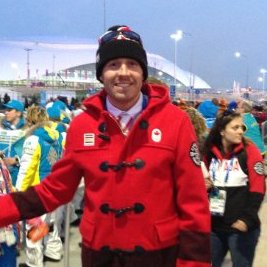
The future of ski jumping and nordic combined in Canada is in limbo after one of the sports’ main funding sources, Own the Podium (OTP), decided to stop funding the sports for the 2014/2015 season. OTP is a sport-support program that makes recommendations for government and private-sector funding based on “targeted excellence” criteria.
FasterSkier learned of the funding cuts in a leaked document that included the proposed numerical amounts of funding for each program OTP plans to support: hockey, freestyle skiing, speed skating, figure skating, ski cross, curling, snowboarding, bobsleigh, alpine skiing, luge, cross-country skiing, biathlon, and skeleton. The document did not include ski jumping or nordic combined.
Both Curtis Lyon, Ski Jumping Canada and Nordic Combined Canada’s chairman and high-performance director, and OTP’s Director of Winter Sport Peter Judge confirmed the funding cut. But how that information was communicated remained unclear after speaking with Lyon and Judge in separate phone interviews.
According to Lyon, OTP did not contact his sports to inform them of the loss of funding. He stated that there had been no communication from OTP since May 16 and that he found out about the cuts by word of mouth and privately shared documents.
“I knew the number of sports getting cut plus there has obviously been leaked information,” Lyon said in a phone interview. “I know what I’ve seen even if it hasn’t been 100-percent official. Other sports have been notified of their dollar amounts so I’m just assuming that they’re not even taking the time to give us the call back.”
Judge said OTP notified Ski Jumping and Nordic Combined Canada about the decision to eliminate funding to their sports in mid- to late June. Lyon said he tried to contact OTP repeatedly for official information, without any luck.
“I don’t know if he continually contacted us,” Judge said. “I’ll look into it.”
According to Judge, the official funding numbers for the 2014/2015 season will be released on the OTP website once they are approved by Canada’s minister of the state (sport).
What this means for Canadian Jumping & NoCo

Without OTP’s financial support, Lyon said that the state of ski jumping and nordic combined in Canada depends on various factors and is currently uncertain. The two sports have several other possible funding sources, including Sport Canada, which operates directly under the government, but nothing was confirmed as of late July.
“We are working with Sport Canada to gain recognition under the Sport Funding Accountability Framework,” Lyon explained. “If that process goes well we can hopefully secure some level of support for the next four years but this is still unclear. Obviously we were expecting some investment from Own the Podium based on what we felt were fairly strong results and a fairly strong program going forward. It was obviously pretty frustrating as that was not the case.”
Lyon was most frustrated with the lack of communication. Had OTP informed them of the cuts earlier this year, Lyon said that the extensive amount of time they spent on the OTP application could have been put toward finding alternative financial supporters.
Over the past four years, Ski Jumping and Nordic Combined Canada have received $600,000 Canadian dollars to support the development of elite athletes, according to Lyon, who added that this number is misleading.
“If you look on their website, it says $600,000 dollars over the last four years,” he said. “What they don’t show is that in the first year of the quadrennial, we got about $200,000 dollars, the second year was $300,000, the third year was $100,000 and the last year was zero.
“We got a pretty hefty lecture that [OTP] had spent $600,000 over four years to get twelfth place in the Olympics,” Lyon added. “My response was, well, how do you put together a program based on such highly fluctuating numbers from year to year?”
According to Lyon, the year the program received $300,000, there was only one 15-year-old female on the team and she posted variable results throughout that season. However, when their funding was subsequently slashed to $100,000, athletes from the development program began to improve and Canadian ski jumping started consistently placing in the top 10 at World Cups, with occasional podiums at the Grand Prix.
Even in the 2013/2014 season, Canadian ski jumping saw some significant gains on the international ski jumping circuit with Atsuko Tanaka earning fourth in the 2014 Gand Prix standings. Takana and teammate Taylor Henrich also placed 12th and 13th in the Olympic HS 106 ski jumping competition.
“It’s a mismanagement of funds on their part,” Lyon said. “It’s just very inconsistent and short-term thinking.”
It is important to note, however, that men’s ski jumping was unable to match its women’s results and had only one competitor, Mackenzie Boyd-Clowes, who consistently competed in ski jumping World Cups in 2014.
Additionally, Canada had no competitors racing on the nordic combined World Cup circuit in 2014. While there were Canadian athletes competing in the 2014 nordic combined Continental Cups, their results were unable to earn them World Cup or Olympic starting spots.
According to Judge, his organization saw a very low possibility of ski jumping or nordic combined winning a medal in the 2018 Olympics, and thus believed OTP’s money would put to better use funding for other winter sports.
“Our mandate and our mission is simply around medal potential for 2018 and certainly on the nordic-combined side that’s been a challenge,” Judge said. “There are not any medal-potential athletes in coffer. On the ski-jumping side, again I looked at the data that was there and it was hard pressed to find medal potential for 2018.”
Judge stressed that OTP is not the sole-funding source for Canadian sports, and national-sport organizations (NSOs) are responsible for developing their sports’ Olympic-medal potential. According to Judge, funding from OTP is only a “small part of the equation” and that NSOs need to be able to function without the support of OTP.

Lyon countered that while OTP is one funding source, the opportunities that come with being an OTP-sponsored sport totals much more than the monetary amount would suggest.
“They are one funding source; that’s what they’ll tell you,” he said. “As soon as you are not funded by OTP every other door closes. All the money for your sport services is gone. You can’t access this gym, you can’t access that gym. You get lower priority when you actually go to the Olympics in terms of the credentials, where you stay, how you are treated there. It’s a ripple effect. You are screwed at that point. There is no way back.”
Lyon said the current situation is not exactly surprising given how OTP had addressed nordic combined and ski jumping in the last decade.
“You are taking a sport that had potential and basically trying to kill it to the point where it may not exist in the country, rather than have a long-term goal and plan and work with the sport to develop it over four or eight years,” Lyon said. “That’s the way the sport has been for the last eight to ten years. We build a little momentum and then something changes and it almost folds altogether.”
What’s next
This season, three athletes represent Ski Jumping Canada: Atsuko, Alexandra Pretorius, and Taylor Henrich, who are all returning women’s national team members.
As for nordic combined, Lyon said that he didn’t know of anyone who was officially going to be on the national team, or if there would be a team at all. He said several athletes had discussed training in the U.S., but he was unaware of their status.
Canadian ski jumping and nordic combined relied heavily on partnerships with their U.S. counterparts the last few seasons.
Under previous arrangements, Ski Jumping Canada shared a coach with the U.S. and often joined the Americans’ training camps. Nordic combined was more reliant on the U.S., paying the U.S. Nordic Combined to coach, house, and provide waxing services for their athletes during the Continental Cup season.
This arrangement is up in the air for the upcoming competition season, as the status of Canadian ski jumping and nordic combined remains uncertain. U.S. Nordic Combined is working on fundraising, too, after the U.S. Ski & Snowboard Association ceased team funding this month.
Lyon expressed some optimism with a new training center opening at Whistler Olympic Park in British Columbia. Using the jumps from the 2010 Olympics, two clubs will attempt to develop a program in that area. Additionally, a strong recruitment program in Calgary will continue to introduce athletes to ski jumping and nordic combined.
However, Lyon stressed that for Canadian ski jumping and nordic combined to survive, it is necessary to find organizations that are intent on focusing on the long-term development for both sports.
“If we want to survive, we need to take matters into our own hands and really develop those relationships and get that money coming in and build up those relationships over the years,” he said, “Instead of just waiting for handouts from organizations that obviously have no long-term goals for organizations like our ours.”
Lander Karath
Lander Karath is FasterSkier's Associate Editor from Bozeman, Montana and a Bridger Ski Foundation alumnus. Between his studies at Middlebury College in Vermont, he is an outdoor enthusiast and a political junkie.



